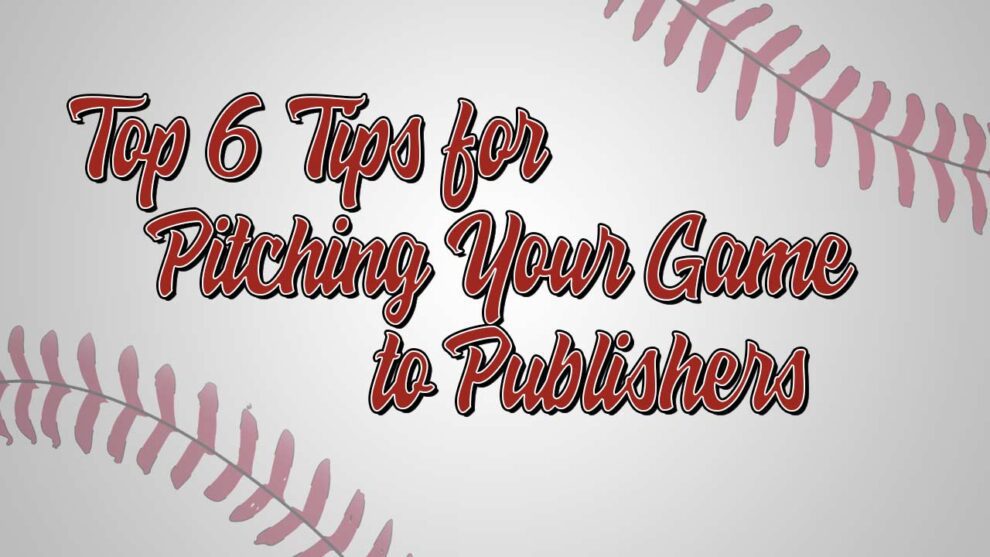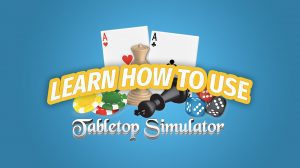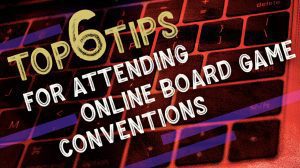Pitching a board game to a publisher can be both exciting and nerve-wracking. It involves presenting your game concept clearly and concisely, highlighting its specific mechanics, theme, and market potential. You’ll need to be prepared to demonstrate how the game is played, often through a prototype, and to explain why it stands out in a crowded market. Here are six tips to help you successfully pitch your game and make a lasting impression:
1. Know the vitals
Understand the minimum age, gameplay time, and minimum player count. If your game has a solo mode, be sure to mention this during your pitch. Single player games are hugely popular right now. Having a peculiar player count (for example, needing a minimum number of 3 players) is a red flag for some publishers. Be ready to explain why your game has such a player count. Two to four player games are typical these days. Personally, I like to make games for up to six players. People seem to like the idea of a game that plays a larger group but isn’t a party game.
You also need to understand your game’s primary mechanic. There are many types of board game mechanics which can be confusing to someone new to the industry. BGG has the best list to reference. If you’re still not quite sure what your primary mechanic is, ask your trusted network of designers. They can help you nail down the answer. If you want to know more about finding a network of designers to help you get from concept to published game, be sure to read “Top 6 Tips to Jumpstart Your First Game Design.”
Be sure to know who your target audience is. Think about what kind of people would enjoy your game the most. If your game is most enjoyed by a group that regularly meets to play then your audience is likely for folks who enjoy medium to heavy games. If your game is most enjoyed by folks who play occasionally, then your target audience is probably casual players.
2. Research Publishers
Look for publishers that produce games similar in genre or style to yours. Understanding a publisher’s catalog can help you tailor your pitch to align with their brand and interests, increasing the chances of a positive response. Publishers will often announce they are taking game submissions or making appointments for pitches at an upcoming game convention. The best place to check for these announcements is the publisher’s site. You may also want to skim through the publisher’s social media posts.
Along with the announcement, publishers will provide their submission guidelines. Be sure to read these guidelines carefully. Submissions often involve filling out an online form or writing an email in a specific format. An interesting recent trend for publishers is to request a pitch in a video format along with the form or email.
Personally, I prefer publishers who like to take pitches at conventions. The submission process, in this case, often involves filling out an online form and selecting a time to make the pitch during the convention. These appointments tend to fill up quickly. If you want to pitch a publisher at a convention, I recommend grabbing one of these appointments as soon as possible. Contact 6 to 8 weeks prior to convention.
Some conventions have Speed Pitching or Speed Dating events. This is a great way to pitch to many publishers at once. Check the convention website or social media posts to see if your next convention has this kind of event. Gen Con and Origins typically have at least one Speed Pitching event. They often have two events throughout each convention. If you want to learn more about the Speed Pitching experience, be sure to read “Designing the Perfect Partnership: Gen Con Speed Dating.”
3. Know Your Audience and Market
Understand where your game fits in the current market. Look at your game vitals, price point, and game mechanics. See what other games are comparable to yours. Don’t worry if you find games that feel almost identical to yours. There’s tons of games out there but a limited number of mechanics and themes. It’s actually very good to know which games are similar to yours. Publishers may ask if you understand how alike your game is to another. The key here is understanding how your game is different from others. Admitting to a publisher that your game is similar to another but explaining what aspects make it unexpected is a great way to show your knowledge of the market and how your game fits in it.
I also recommend doing some research to figure out the landscape of your market. Make an effort to understand current trends, competitiveness, and which companies dominate that market. In particular, make an effort to understand how your game navigates that landscape. For example, telling a publisher that your game may have the similar mechanics and themes to several other games but all those games are competitive while yours is cooperative is a great way to catch the attention of a publisher. Showing awareness of the market demonstrates professionalism and a realistic perspective on your game’s potential success.
4. Know “The Hook” of your game
I have yet to find a new game designer who didn’t think their game was “fun and unique”. However, the best designers can quickly communicate exactly what specifically makes their game worth playing. In other words, don’t just tell publishers that your game is fun and unique, tell them what aspects make your game fun and unique. Publishers refer to this as “The Hook”. Take care to figure this out. Sometimes it’s easy for a new designer to miss the hook of their game within the chaos of the game design process. When I first started designing, I often confused what is fun about the game with what was fun to design. These are not the same things. I recommend consulting your close network of design friends to discover the Hook of your game.
5. Create a Professional Prototype
Your prototype doesn’t need to have finalized art, but it should be neat and functional. Make sure the components are durable enough for repeated playtesting and that the rules are easy to understand. I recommend using a print on demand service like The Game Crafter or Launch Tabletop to produce your professional prototype.
I recommend making at least two prototypes. You’ll need one prototype to demo and another prototype ready to send to a publisher if they request one. If a publisher shows interest in your game, get the game in their hands as quickly as possible. If you’re pitching at a convention and the publisher asks for a copy, you can hand it over to them. If a publisher emails you and asks for a copy of your game, go to the post office ASAP and send your game to them. As I see it, delays just provide more opportunities for things to go wrong. For example, your print on demand service may run out of a part you need.
6. Prepare a Sell Sheet
A sell sheet is a one-page document that provides a snapshot of your game. I could write a whole separate article or even a series of articles about the process of creating a good sell sheet. But I’ll just give the basics. A sell sheet includes the following information:
- Title of your game
- The Vitals: Number of Players, age range, and gameplay time
- A picture of your game
- Components list
- A short description including theme, primary mechanics, and “The Hook”
- Your contact information
I recommend using a picture of your game as it is set up on the table for play. Many publishers use sell sheets as memory joggers. They may not remember the specific name of your game but they’ll remember how it looked on the table when you pitched it. So having a picture of your game on the table will better help them remember your game.
The Hook is one of the most important aspects of your sell sheet. The Hook is where you spell out what makes your game fun and unique. I like to make this aspect easy to find. I’ll often put it in a brightly colored box to make it easy to find.
You’ll also want to include a component list. This will provide the publisher an idea of how much your game will cost to produce.
I think there is a misconception that sell sheets are supposed to be visually stunning. Personally, I think it is more important for the sell sheet to be well organized and easily readable. While it is called a “sell” sheet, it’s not intended as a marketing tool. I’ve never met a publisher who said, “That is an attention grabbing sell sheet. I think I want to publish that.” Help the publisher understand all the details of your game by having a coherent and unambiguous sell sheet.
A sell sheet is a good place to put a web site address or QR code to find more information about your game like a gameplay video or completed rulebook. For more ideas about assets you can link to check out “How to Create a Killer Board Game Media Kit.”
If you’re pitching to publishers at a convention, be sure to bring several copies of your sell sheet with you. I usually bring 10 copies with me to the convention. If I’m pitching to more than five publishers, I just double that number and bring that many copies. I also include a copy of my sell sheet in my prototypes.
Now, put it all together!
Create a clear, compelling “elevator” pitch – a pitch that summarizes your game in a few sentences. Highlight what makes your game unique and exciting. Your goal is to catch the publisher’s interest quickly. Find a quick way to show off the best parts of your game: I typically start with the vitals then the primary mechanics followed by The Hook within the first 30 seconds of the pitch. If you believe any specific aspect that would interest the publisher, be sure to talk about it as soon as possible. If given the opportunity, be prepared to set up and explain your game quickly and efficiently. Practice a smooth run-through of gameplay with friends or family to ensure you can present it well under pressure. I recommend your entire pitch last no longer than four minutes. Be prepared for the publisher to ask questions or request more details on certain aspects.
Remember, persistence is key in the board game industry. If your first pitch doesn’t succeed, take any feedback you’ve received to heart, refine your game and pitch, and try again with another publisher. Good luck!











